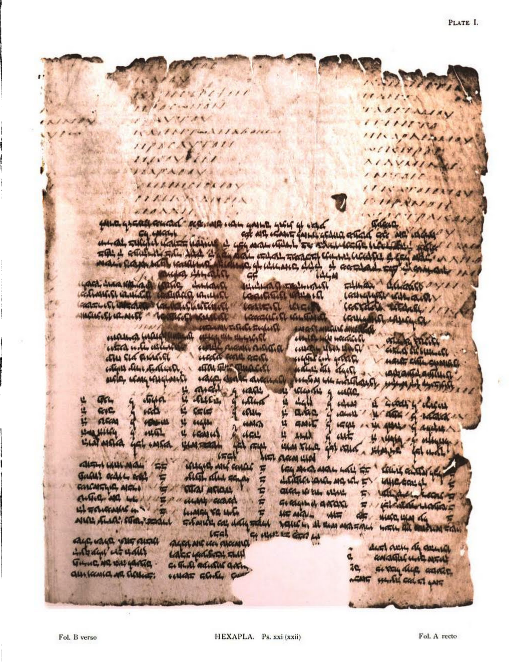
For confirmation of the layout of the codex page openings of the Hexapla we depend upon later evidence: two early manuscript fragments that survived. The first is a palimpsest from the Cairo Genizah in which the 8th century Greek text of a portion of the Psalms in the columnar form of the Hexapla was overwritten in Hebrew. This leaf, preserved at Cambridge, was first reproduced by Charles Taylor in Hebrew-Greek Cairo Genizah Palimpsests from the Taylor-Schechter Collection, Including a Fragment of the Twenty-Second Psalm According to Origen's Hexapla. (1900),plate 1.